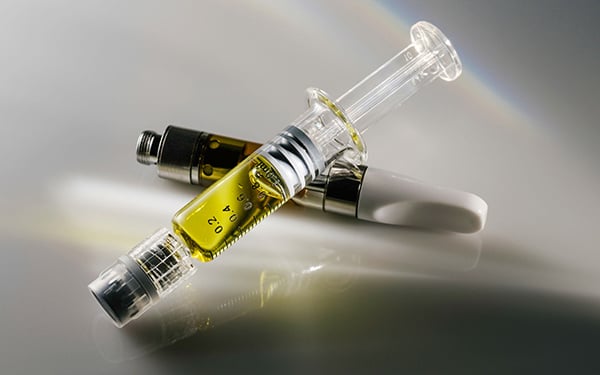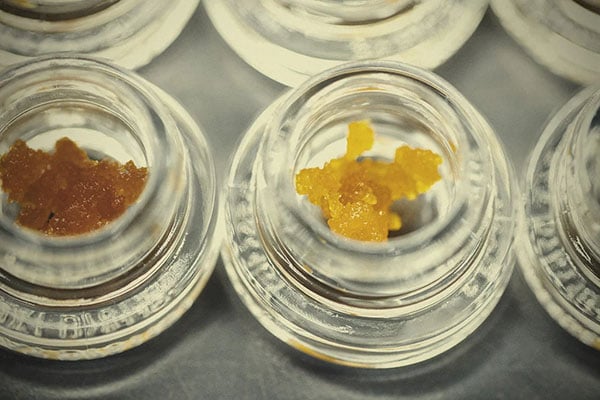What is CRC technology, and is it safe?
What is CRC technology, and is it safe?

It used to be you could tell the quality of cannabis extracts by their color. Conventional wisdom was "Gold is good"; however, since the rise of color remediation column technology (CRC), this is no longer the case.
The rise in new ways of extracting hash and cleaning up dirty extracts means that the old methods for detecting low-grade oil are no longer valid.
CRC is a method of post-extraction filtration to lighten the color of oil extracts and remove nasty odors and possible pesticides.
While some in the industry argue it's perfectly safe, others are not so sure, and like all new technology, it's sparked controversy.
One of the most significant criticism is that it allows hawkish hash extractors to clean up low-grade cannabis oil, so it looks like a high-grade product, then pass it off to unsuspecting customers who may well think it's top-shelf live resin.
While CRC has been around for several years, it's only in the past couple of years that it has attracted much attention.
Like all things new, there is limited data, and as there is no testing for CRC contamination, it is hard to know how safe it is.
What is CRC tech?

Color remediation column technology isn't a set method; it's a group of methods. It mainly applies to butane hash oil. The color remediation column is often a steel cylinder packed with a filtration medium.
After extraction, this medium filters the end product and removes impurities.
CRC changes a low-grade hash oil's color by filtering out the green-brown plant pigment chlorophyll and in doing so, changes the color from almost black or dark brown to amber or even lighter color.
The mediums most commonly used are activated charcoal, Bentonite clay, Magnesol, Diatomaceous earth, and silica. Often a combination of these filtration mediums is used.
States with legal cannabis programs don't test for this and don't require disclosure from the manufacturer or seller. This has created a minefield of products that leaves customers unsure of what they are buying.
While many customers may not care what they are buying, many connoisseurs don't want to get conned into paying top dollar for extracts that are sub-par.
CRC removes more than color
While it is called the 'color' remediation column, the filtration system used does more than stip the color. Many experts say that manufacturers are using CRC to remove residual pesticides and other byproducts such as off-flavors caused by processing inferior herbs in the first place.
The main reason for this would appear to be profits. If manufacturers can buy cheaper lower, grade marijuana and process it to simulate that of a higher grade, they can clearly make it more attractive and lower priced.
How widespread is CRC
In addition to many manufacturers having their own method, CRC is quite literally everywhere.
Anecdotal evidence from industry insiders suggests as much as 90% of the market use some form of CRC.
How safe is CRC hash?
The safety data and research on CRC are very thin. But thanks to online discussions and broader awareness, hopefully, this will change.
There are some long-term studies on bentonite clay and diatomaceous earth. These found that after years of exposure to breathing in high concentrations of this fine sand daily and concluded it could cause respiratory damage, and so can silica gel.
Generally Recognized as Safe is not relevant
Many of the materials used in CRC methods are labeled by the Food and Drug Administration (FDA) as Generally Recognized as Safe (GRAS). But this GRAS labeling is not relevant as it applies to food products that interact with the stomach. It doesn't mean those same materials are safe for inhalation where they interact with the lung tissue.
This was evident in many of the EVALI cases with fake carts that supposedly used GRAS substances.
There are some materials like bentonite clay that the FDA has issued warnings for, even though it is GRAS.
The warning for bentonite clay from the FDA said that high levels of lead might pose a lead poisoning risk.
CRC not tested for
Despite all this, there are no regulations requiring a test for CRC media. As the industry has widely adopted CRC without any test for it being put in place, it could be a serious concern. If, as hash makers claim, CRC is truly safe, then testing for it shouldn't be a cause of concern for manufacturers and should be celebrated if it can make a cleaner safe product. It would also help consumer confidence.
Additionally, labs could easily filter oil with a simple 0.45micron filter to ensure that no media remains in the CRC-treated oil. However, not all labs are reputable or legal, and as there is no testing, it means contaminated oil could well be sold to unsuspecting customers.
How to detect CRC oil/wax
One of the best ways to check if the oil has been CRC treated is the sniff test. CRC removes terpenes, not that may not be noticeable if running distillate, but the lack of terpenes could be a sign wax has been CRC treated.
The treated wax may have non-cannabis terpenes added, leaving a lime-aid smell. Additionally, if too much CR material is used in a column, it can leave a chemical smell behind. This can be very evident when the wax is vaped.
Another test is to look closely at the color. Even high-end extracts will have a yellow tint as mature trichomes have a natural amber color that should carry through into the extract.
CRC is generally used in BHO carts and wax. To avoid CRC-treated extracts, many people gravitate to natural or solventless extracts -such as kief, rosin, live rosin, and bubble hash.
While many CRC products are not labeled, it's always worth asking your budtender if they know, most are happy to help if they can. Hopefully, this preference will filter back to manufacturers if people start asking more about what they are consuming.
